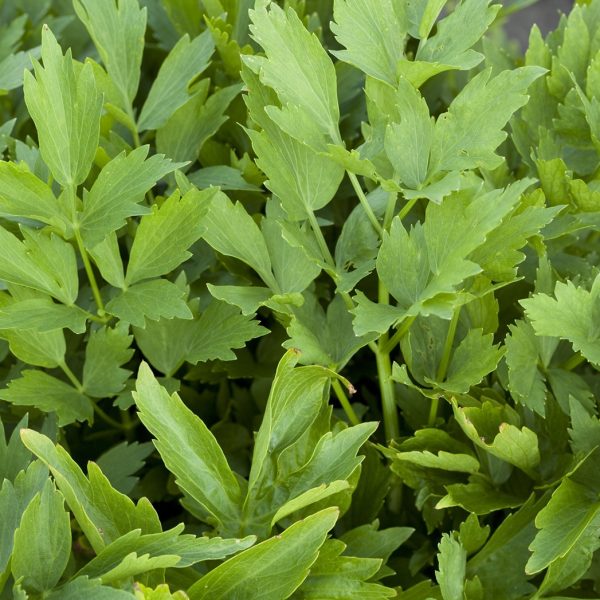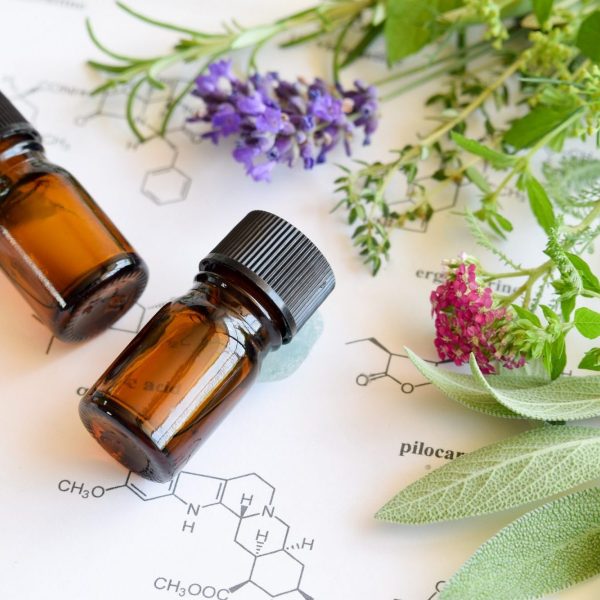-
How does it feel?
Raspberry leaf has a powerfully astringent action which is felt directly on tasting. The presence of astringency in a herb indicates tannin content, the taste of tannins is sour due to their natural acidity. The taste develops into bitter, sharp and slightly aromatic with hints of fresh mown grass. A herb that feels fresh and tonifying to drink as tea, used as fresh or dried herb.
-
What can I use it for?
 Raspberry is a common garden plant as the fruit is a well-known favourite. The leaves are also used in herbal medicine and can be harvested for this purpose in early summer.
Raspberry is a common garden plant as the fruit is a well-known favourite. The leaves are also used in herbal medicine and can be harvested for this purpose in early summer.Raspberry leaf is a well-known and widely used herb for strengthening and toning the uterus and thus preparing the body for labour. It has a very long history of use for this purpose. It purportedly strengthens contractions and checks haemorrhage during labour.
Additionally, it may help milk production, and aid the body in recovery from childbirth. For this, it is drunk as a tea. Because raspberry leaf is considered a uterine tonic, it may also help with heavy or painful menstruation.
The astringency of the leaf is due to its tannin content. Herbs with high tannins can be applied in cases of diarrhoea if there is no serious underlying cause. They can also be applied topically to wounds as a lotion or poultice to aid healing.
Raspberry leaf infusion is also sometimes used for eye conditions such as styes, conjunctivitis and blepharitis, much in the same way as with eyebright, which it can also be used in combination with (9).
-
Into the heart of raspberry
 Raspberry leaf is a wonderful cooling and drying medicine that brings tone to our inner landscape. Astringent herbs like raspberry leaf pucker the mucous membranes (the inner lining of our visceral organs), the same goes when used externally for wounds and burns.
Raspberry leaf is a wonderful cooling and drying medicine that brings tone to our inner landscape. Astringent herbs like raspberry leaf pucker the mucous membranes (the inner lining of our visceral organs), the same goes when used externally for wounds and burns.This toning effect is a result of the tannin compounds found in Raspberry leaf, which are present in ample quantities. Tannins create a tough impermeable ‘leather like’ film over the mucous membranes, creating a protective layer between our inner and outer world, perhaps this could be seen also as a boundary keeper.
A holistic herbalist would consider the relationship between our physiological and emotional experiences and how our inner landscape often reflects our outward experiences (and vice versa). The tissue state that would indicate the need for tonic herbs (such as with conditions where there are excess secretions and looseness of tissues) may also come hand in hand with a patient who has boundary problems in their relationships. Just as the tonic herbs creates a boundary, by increasing the strength of the membranes of our digestive system.
This therapeutic action could be translated as one that may support a person to have stronger boundaries, perhaps given in lower ‘energetic’ doses to a patient for this application.
Often our experiences and interactions with the world around us are reflected by our inner world, our body tissues respond to our emotional state. This can be understood in biomedical terms as our experiences inform our nervous system. Stress and traumatic experiences leave a blueprint by which our Autonomic nervous system (ANS) responds accordingly.
Herbs work in their subtle, energetic ways to re-inform our system, allowing it to return to a balanced function.
By the Galenic Key of temperaments, all parts of the Raspberry plant can be used as medicine, the roots, stalks, leaves, flowers and unripe fruit are cold and drying in the first degree. Which can be used for excess secretions, such as with menorrhagia (heavy menstruation), loose bowels, ulcers, sores and for the cooling of burns. NOTE: burns should always be treated conventionally before applying herbs.
-
Traditional uses
 Although it has been a favourite of midwives for easing labour and encouraging milk production, red raspberry leaf has a history of being used for diarrhoea, where it was drunk as a decoction.
Although it has been a favourite of midwives for easing labour and encouraging milk production, red raspberry leaf has a history of being used for diarrhoea, where it was drunk as a decoction. It has also been used for wound care. The infusion was used as a wash for conjunctivitis, bleeding gums, and a lotion for ulcers and other wounds. It can also be applied as a gargle for sore throats. A poultice of the leaf, combined with slippery elm, is recommended by Grieve for wounds and burns, and to draw infection.
Raspberry fruit is also a delight, and has been used medicinally as well. Culpepper favoured the syrup of the fruit for digestive and dental complaints, for preventing miscarriage, and to prevent “sickness and retching”.
The leaves and roots are anti-inflammatory, astringent, decongestant, ophthalmic, oxytocic and mildly stimulant. Traditionally blackberry and raspberry leafs were used together to improve energy levels. The tea has also been used traditionally as a remedy for relieving painful menstrual cramps.
Externally, the leaves and roots are used as a gargle to treat tonsillitis and mouth inflammations, as a poultice and wash to treat sores, conjunctivitis, minor wounds, burns and varicose ulcers
-
Traditional actions
Herbal actions describe therapeutic changes that occur in the body in response to taking a herb. These actions are used to express how a herb physiologically influences cells, tissues, organs or systems. Clinical observations are traditionally what have defined these actions: an increase in urine output, diuretic; improved wound healing, vulnerary; or a reduction in fever, antipyretic. These descriptors too have become a means to group herbs by their effects on the body — herbs with a nervine action have become the nervines, herbs with a bitter action are the bitters. Recognising herbs as members of these groups provides a preliminary familiarity with their mechanisms from which to then develop an understanding of their affinities and nuance and discern their clinical significance.
Western actions
Chinese actions
-
Traditional energetic actions
Herbal energetics are the descriptions Herbalists have given to plants, mushrooms, lichens, foods, and some minerals based on the direct experience of how they taste, feel, and work in the body. All traditional health systems use these principles to explain how the environment we live in and absorb, impacts our health. Find out more about traditional energetic actions in our article “An introduction to herbal energetics“.
Chinese energetics
-
What practitioners say
 Reproductive
ReproductiveRed raspberry leaf is best known as a safe and widely used partus praeparator, which Trickey recommends using in the last 5 months of pregnancy (2). Not only does this support the uterus in preparation for giving birth and ease the birth process, but it also helps in involuting the uterus after delivery, and with the production of breast milk.
The leaf is also recommended in cases of heavy and painful menstrual bleeding, as well as the post-operation care of the uterus. This is due to its tonic and vulnerary action. It may also be applied in cases of vaginal discharge, although it is important to seek medical attention if discharge has changed.
The actions of raspberry leaf are parturient (or partus praeparator), it works as a uterine tonic, astringent, nutritive and uterine spasmolytic.
It is also sometimes used for the symptoms of endometriosis. In pregnancy it is usually effective for morning sickness and nausea that extends into the second trimester.
Skin
The tea can also be made into a wash to aid the healing of wounds, burns, bleeding gums, tonsillitis, and conjunctivitis and acts as helpful as a mouthwash for inflammation of the mouth and throat. It is also useful as an eye lotion for conjunctivitis.
Other
Raspberry leaf is also found to have antioxidant activity, making it a herb that may be additionally supportive for cellular health. It may be used as a conjunctive treatment for cell abnormalities (12).
Raspberry leaf is rich in trace minerals such as iron, manganese, potassium, zinc, copper, calcium, magnesium and phosphorous, making it an excellent blood tonic and source of nutrients, an additional benefit to the expectant mother and her baby, or for anyone using the tea.
-
Research
 A study that consisted of 108 mothers; 57 (52.8%) who consumed raspberry leaf products while 51 (47.2%) were in the control group. The findings suggest that raspberry leaf herb is safe to take to shorten labour with no identified side effects for the women or their babies. The findings also suggest that raspberry leaf might decrease the likelihood of pre and post-term gestation. An unexpected finding in this study seems to indicate that women who ingest raspberry leaf might be less likely to receive an artificial rupture of their membranes, or require a caesarean section, forceps or vacuum birth than the women in the control group (10).
A study that consisted of 108 mothers; 57 (52.8%) who consumed raspberry leaf products while 51 (47.2%) were in the control group. The findings suggest that raspberry leaf herb is safe to take to shorten labour with no identified side effects for the women or their babies. The findings also suggest that raspberry leaf might decrease the likelihood of pre and post-term gestation. An unexpected finding in this study seems to indicate that women who ingest raspberry leaf might be less likely to receive an artificial rupture of their membranes, or require a caesarean section, forceps or vacuum birth than the women in the control group (10).In another study to investigate the use of herbal medicines by pregnant women. A structured questionnaire was given under interview of 600 women at Stavanger University Hospital Norway within five days after birth. Medical birth charts were reviewed with respect to pregnancy outcome. There was a significant association between the use of raspberry leaves and the reduced incidence of caesarean delivery (11).
A study was carried out to examine the biological activities and the chemical composition of the extract of leaves of R. idaeus, obtained by steam distillation. The extract showed a strong antioxidant capacity and a modest antibacterial activity against two bacterial strains, as well as significant cytotoxic activity against tumor cell lines (Caco-2 and HL60). Additionally Raspberry leaf was found to be proliferative on healthy cells (12).
Considering its long standing history of use and popularity, there have been remarkably few clinical trials for the efficacy and safety of red raspberry leaf. A review in 2009 found only 12 studies that met the research criteria, where only 5 were clinical trials and the rest were either in vitro or animal studies.
-
Did you know?
Red raspberry leaf was included in the British Pharmaceutical Codex, where it was indicated for heavy menstrual bleeding.
Additional information
-
Botanical description
Raspberry is a deciduous biennial shrub that can grow up to 2 meters in height. It has many thick, reddish, woody stems that are usually prickly. The pale green leaves are pinnate with 3-7 oval, toothed leaflets and have white hairs on the underside. The flowers are white and appear in dense clusters from spring to summer. The fruits are red.
It is a common garden plant that is grown from suckers. The fruits are a common food, while the leaves are used medicinally.
-
Common names
- Raspberry
- Hindberry
- Bramble of Mount Ida
-
Safety
Although there is a limited amount of information, no drug interactions or safety concerns have been highlighted.
As raspberry leaf contains tannins, prolonged consumption may interfere with mineral absorption. -
Interactions
None known
-
Contraindications
None known
-
Preparations
- Fresh or dried leaf tea
- Tincture
-
Dosage
- Tincture: 2-4ml three times per day (1:5)
- Dried: 2 tsp with 1 cup boiling water, one to three times per day
-
Plant parts used
- Leaf
- Fruit
- Flower
- Root (mainly leaf)
-
Constituents
Leaf
- Flavonoids (up to 5%): kaempferol and quercetin
- Tannins (up to 10%): gallo- and ellagi-tannins
- Phenolic acids
- Volatile oil
- Minerals: iron, manganese, potassium, zinc, copper, calcium, magnesium, phosphorous
- Vitamin C
Fruit
- Anthocyanins
- Tannins
- Flavonoids
- Vitamins A

-
Habitat
The plant is native to Europe and Asia, and is found in mountainous regions in cold climates, usually growing in Forest, Shrubland, Wetlands (inland) or Artificial/Terrestrial.
-
Sustainability
According to the IUCN Red List, Raspberry is classified as of ‘least concern’, this means that it is not under threat as a plant in its natural habitats.
Raspberries are considered invasive, a plant that is likely to spread out of control. It is advised to contain or manage its growth by creating a boundary around any existing plants.
-
Quality control
Herbal Medicines are often extremely safe to take, however it is important to supply herbal medicines from a reputed supplier. Sometimes herbs bought from unreputable sources are contaminated, adulterated or substituted with incorrect plant matter.
Some important markers for quality to look for would be to look for certified organic labelling, ensuring that the correct scientific / botanical name is used and that suppliers states clearly the source of ingredients used in the product.
A supplier should also be able to tell you where the herbs have come from. There is more space for contamination and adulteration where supply chain is unknown.
-
How to grow
Plant raspberry canes 45cm apart with 1.8m between rows in moist but well-drained, fertile soil. For best results in open, sunny location. Firm in and water well. Tie in summer-fruiting canes as they grow, cutting back weak stems (autumn-fruiting varieties do not require support).
In spring, feed with a general fertiliser and mulch around plants to keep their roots slightly moist and to suppress weeds. Keep the plants well watered during dry spells. Harvest raspberries as and when they ripen. Cut autumn-fruiting canes back to the ground after fruiting, and cut back old canes of summer-fruiting varieties, leaving new canes for next year’s crop.
-
Recipe
A tea for heavy menstruation
Ingredients:
- 15g Raspberry leaf
- 15g Lady’s Mantle
- 20g Nettle leaf
Method:
Mix all ingredients together in a bowl. Mix 1 tsp of the blend with 1 cup boiling water and let steep for 5-10 minutes. Drink 1 cup three times daily.
-
References
- Grieve M. A Modern Herbal. New York: Dover Publ.; 1971.
- Trickey R. Women, Hormones & The Menstrual Cycle. Fairfield, Vic.: Ruth Trickey/Trickey Enterprises (Victoria); 2011.
- Holst L, Haavik S, Nordeng H. Raspberry leaf – Should it be recommended to pregnant women?. Complement Ther Clin Pract. 2009;15(4):204-208. doi:10.1016/j.ctcp.2009.05.003
- Burn J, Withell E. A principle in raspberry leaves which relaxes uterine muscle. The Lancet. 1941;238(6149):1-3. doi:10.1016/s0140-6736(00)71348-1
- Bamford D, Percival R, Tothill A. Raspberry leaf tea: a new aspect to an old problem. British Journal of Pharmacology. 1970;40:161P-162P.
- Simpson M, Parsons M, Greenwood J, Wade K. Raspberry leaf in pregnancy: Its safety and efficacy in labour. J Midwifery Womens Health. 2001;46(2):51-59. doi:10.1016 s1526-9523(01)00095-2
- Edwards S, Rocha I, Williamson E, Heinrich M. Phytopharmacy. Chichester, West Sussex: John Wiley & Sons Inc.; 2015.
- Hoffman. D. Medical Herbalism. The science and practice of Herbal Medicine. 2003. Healing Arts Press. India.
- Mills, S.Y. (1993). The essential book of herbal medicine. Editorial: Penguin.
- Parsons, M., Simpson, M. and Ponton, T. (1999). Raspberry leaf and its effect on labour: Safety and efficacy. Australian College of Midwives Incorporated Journal, 12(3), pp.20–25. doi:10.1016/s1031-170x(99)80008-7.
- Nordeng, H., Bayne, K., Havnen, G.C. and Paulsen, B.S. (2011). Use of herbal drugs during pregnancy among 600 Norwegian women in relation to concurrent use of conventional drugs and pregnancy outcome. Complementary Therapies in Clinical Practice, 17(3), pp.147–151. doi:10.1016/j.ctcp.2010.09.002.
- De Santis, D., Carbone, K., Garzoli, S., Laghezza Masci, V. and Turchetti, G. (2022). Bioactivity and Chemical Profile of Rubus idaeus L. Leaves Steam-Distillation Extract. Foods, [online] 11(10), p.1455. doi:10.3390/foods11101455.



























 Raspberry is a common garden plant as the fruit is a well-known favourite. The leaves are also used in herbal medicine and can be harvested for this purpose in early summer.
Raspberry is a common garden plant as the fruit is a well-known favourite. The leaves are also used in herbal medicine and can be harvested for this purpose in early summer. Raspberry leaf is a wonderful cooling and drying medicine that brings tone to our inner landscape. Astringent herbs like raspberry leaf pucker the mucous membranes (the inner lining of our visceral organs), the same goes when used externally for wounds and burns.
Raspberry leaf is a wonderful cooling and drying medicine that brings tone to our inner landscape. Astringent herbs like raspberry leaf pucker the mucous membranes (the inner lining of our visceral organs), the same goes when used externally for wounds and burns. Although it has been a favourite of midwives for easing labour and encouraging milk production, red raspberry leaf has a history of being used for diarrhoea, where it was drunk as a decoction.
Although it has been a favourite of midwives for easing labour and encouraging milk production, red raspberry leaf has a history of being used for diarrhoea, where it was drunk as a decoction.  Reproductive
Reproductive A study that consisted of 108 mothers; 57 (52.8%) who consumed raspberry leaf products while 51 (47.2%) were in the control group. The findings suggest that raspberry leaf herb is safe to take to shorten labour with no identified side effects for the women or their babies. The findings also suggest that raspberry leaf might decrease the likelihood of pre and post-term gestation. An unexpected finding in this study seems to indicate that women who ingest raspberry leaf might be less likely to receive an artificial rupture of their membranes, or require a caesarean section, forceps or vacuum birth than the women in the control group (10).
A study that consisted of 108 mothers; 57 (52.8%) who consumed raspberry leaf products while 51 (47.2%) were in the control group. The findings suggest that raspberry leaf herb is safe to take to shorten labour with no identified side effects for the women or their babies. The findings also suggest that raspberry leaf might decrease the likelihood of pre and post-term gestation. An unexpected finding in this study seems to indicate that women who ingest raspberry leaf might be less likely to receive an artificial rupture of their membranes, or require a caesarean section, forceps or vacuum birth than the women in the control group (10).







